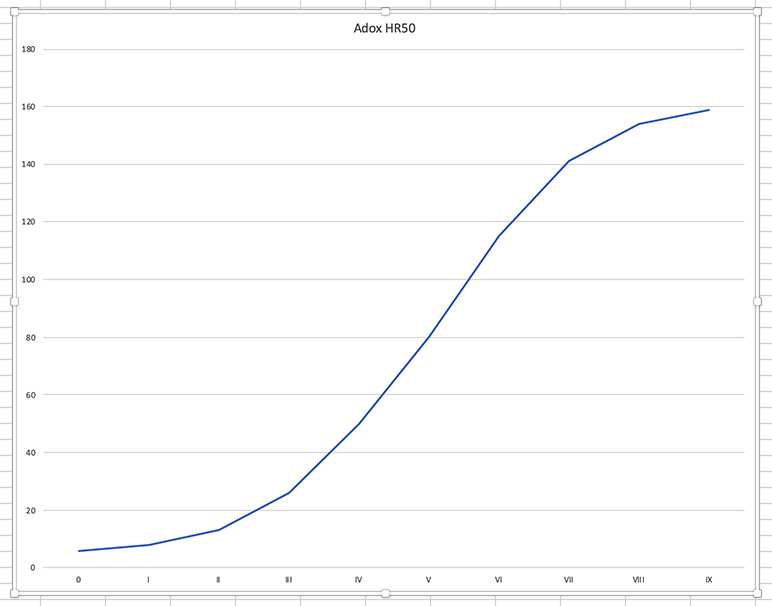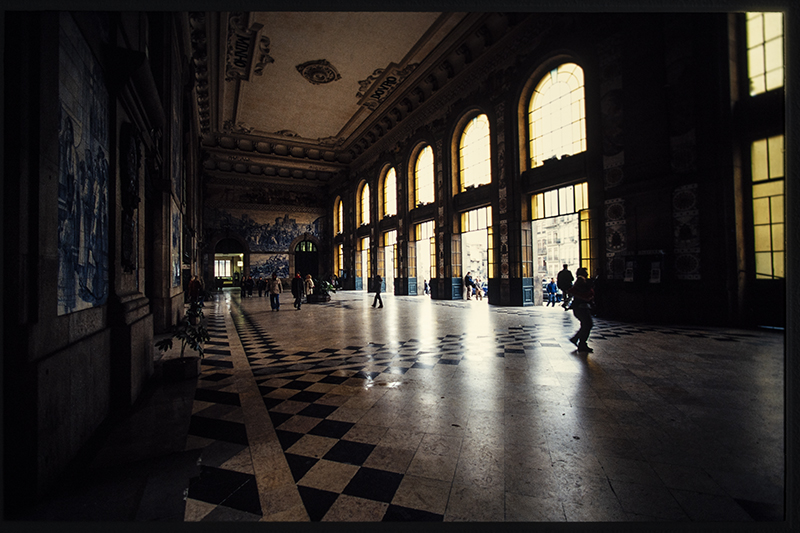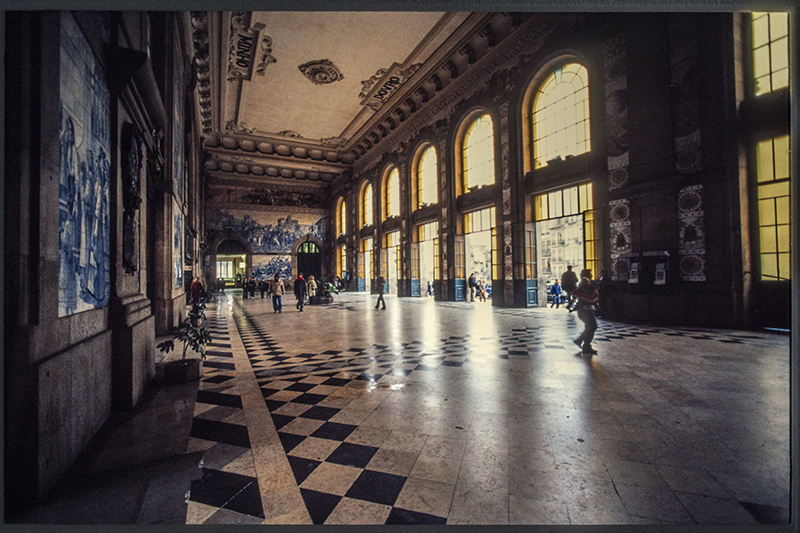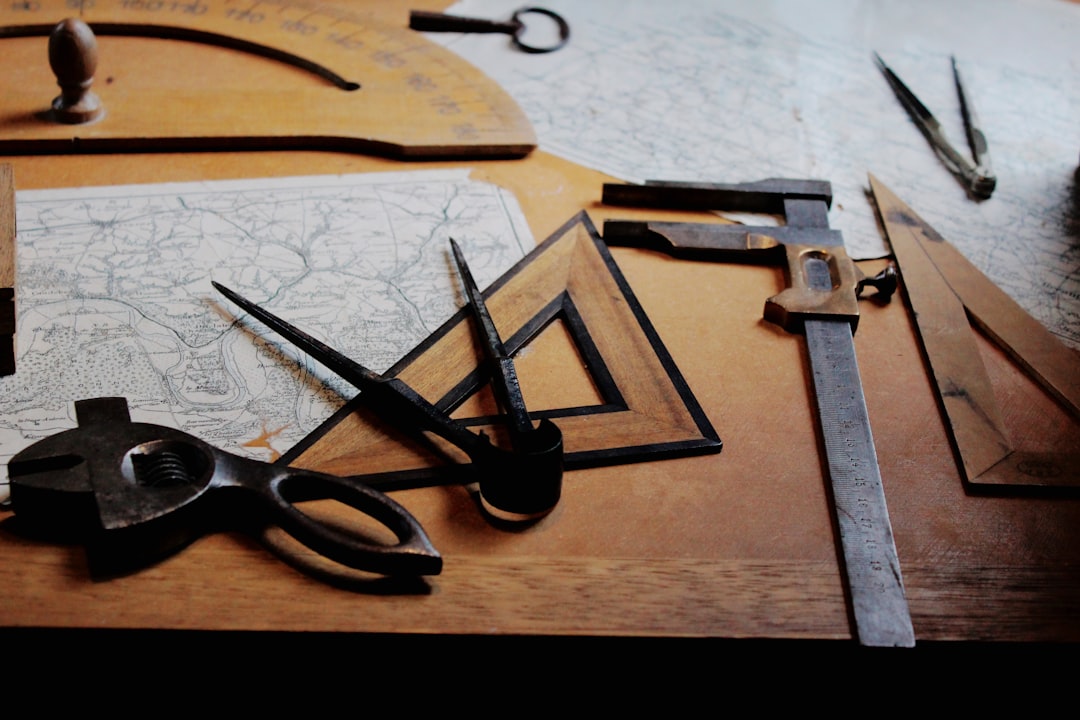24/04/19 15:38
There is a strange contradiction in the everyday photographic practice. Most pictures are taken in bright scenery with apertures between f/4 and f/11. Yet, the high speed lens is much valued and so is the ability of the photographer to take pictures in low ambient light. There is even a cult among Leica users to look at flash with disdain. A true Leica picture is made without flash, is an often heard statement.
In the past, slow speed films and medium aperture lenses were the norm. When photographers extended their domain for ‘fishing images’ to the twilight zone and the scarcely lit interiors of cafés and other public places, the requirement for fast emulsions and wide aperture lenses was a fact of life. Most high speed emulsions, then around ISO 400, were grainy and had in general a long tooth, which reduces the capability for under exposure and always generates a low contrast in the deep shadows.
In those days the standard f/2 workhorse was at the limit of useful work with a 400ISO film and German optical manufacturers were keen to extend this to f1.5 and even f/1.4. The Japanese topped this with f/1.2 and f/1.1 lenses. These lenses were generally of low contrast and did not match smoothly with the low contrast films. But the photographer could get the picture. It became a measure of craftsmanship to be able to take pictures with high speed lenses and relatively slow emulsions in low light situations. Then something curious happened. The different lens departments made the performance of the high speed lens the measure of its design competence. Leitz and later Leica, in particular, made the performance at the wide open aperture their yardstick of optical competence. The smooth and low contrast image of the older generations of lenses, coupled with a shallow depth of field made these lenses (at least for the taste of the generation at that time) destined for portraits. The cult of selective focus was born and with it the idea that this style was the best for general photography. The manufacturers, Leica in particular, were promoting these characteristics of their lenses with a great deal of verve.
The well known characteristics: high cost, shallow depth of field, large volume and careful focusing are negative side effects.
A moderate aperture lens with an opening of f/2.8 is nowadays not done, but it is the best compromise between cost, performance and size. Especially today when high sensor speeds with the equivalent of ISO 12500 are the norm. There is much to argue in favour of a moderate aperture lens of f/2.8. Optical performance can be outstanding (see the last Elmarit-M 2.8/90mm, the lenses are compact (see the collapsible Elmar-M 2/8/50 MM), there is no need for aspherical elements which reduces the manufacturing costs (compare the Summicron-M 2/75 ASPH with the Summarit-M 2.4/75 mm). The size can be reduced also, which is always a benefit.
The aperture of f/2.8 is fully adequate for even the current slow high resolution films when going the Kodak path.
It is good when the prestige element would be diminished for the high speed lenses. Most photographers would be delighted to have high performance, moderately-sized lenses to shoot their pictures in bright sunlight. You lug much volume and accept a high price tag for the occasional shot in the dusk. And flash is always an option. Skillful use of flash is also a mark of craftsmanship!
By the way: Adox HR50 and FX39 are now a beautiful combination with the reduced development times and reduced speed. The lens is the Apo_Summicron-M 2/50 mm ASPH, mostly used at f/2.8 or f/4
15/04/19 13:09
The new Adox HR50 is a remarkable emulsion. It is based on a microfilm, but with additional chemicals to increase the effective sensitivity and enable the use of some standard developers. The famous Crawley formula, FX 39, is one of the options. I used the film with an indicated Iso of 40 and the FX39 in a dilution 1+19 (to compensate for the highlights) for 20 minutes.
The test chart was the grey chart, issued by Sekonic and the exposure meter was indeed the Sekonic L-398-A. Camera was the Leica M-A.
The fog level was very low (density 0.15).
The Zone V was spot on with a net density of 0.80 (official = 0.75). The Zone I (the one designated for the true speed of D = 0.10) was 0.08. Quite close to the norm. The Zones II and II are rather thin with a D of 0.13 and 0.26. The highlights were a bit too dense with VI = 115 and VII = 1.41.
A reduction of the speed to EI = 25 is advisable and a reduction of the development time to 15 minutes is also advisable.
Acutance is high and grain hardly existent. This is a worthy successor of the famous Kodak Tech-Pan.
The graph as made is below. It has the classical S-shape.

13/04/19 17:34
Most camera users and photographers assume and even believe that the analog technique has been finally superseded by the digital technique. This us technological progress: an older less efficient technique has been replaced by a newer and more efficient technique. The analog - digital dichotomy is the wrong metaphor, but as its stands, it is the common usage. But analog is not the opposite of digital and there is no reason why both concepts (and techniques) could not exist side by side. It is, in fact, a continuum, more than an antagonist pair.
The digitization of negatives and slides is something of the past: many users have already converted the silver halide grain patterns into numerical matrices or have forgotten about their possessions. That is the reason why there are only a handful of dedicated scanners on the market. Everyone produces only acceptable results or is so expensive that only a handful of users can afford one.
A reasonable alternative is now on the market: the Kaiser company has already a LED light box on the market and has now supplemented this with a film copy instrument, that looks deceptively like the classical negative carrier for the enlarger. It is heavier however and more stable than the negative carrier tool.
You also need a digital camera with a macro lens. The process is quite simple. The light box is switched on and the film copy tool is placed on top of the light box. Than the slide or negative strip is inserted into the copy tool. A tripod is used with an attached digital camera and a suitable lens.
The Nikon Coolscan has an optical resolution of (theoretically) 4000 dpi/inch and a real resolution of 2600 dpi/inch. This will give you a resolution of the standard 35 mm negative size of 6000 x 4000 or 4900 x 2600 dpi. This performance is easily within reach of a modern digital camera. (I use the Olympus Pen F with 100 mm macro lens). The results are quite good. A slight adjustment in Photoshop (highlight and shadows) produces a HDR effect.
This brings me to the second topic of this blog entry.
The efficiency of these adjustments (including the sharpness options in Photoshop, which are second to none) is excellent and will reduce any differences that (theoretically) exist between lenses.There is hardly any use for lens testing in this digital era. There are two arguments to support this statement. One is the fact that lens performance is now integrated with sensor performance. The second one is the fact that the image processing algorithms are more standardized than ever before and will produce comparable, if not identical, results. The combination: lens + sensor + software is a very potent solution for the problem how to produce high quality imagery. Even Leica uses software to improve the quality of their lenses for their digital cameras.
It made and makes sense to test lenses under analog conditions. But the negatives and slides have to be processed by chemical means in a proper darkroom to see and appreciate the differences. When the hybrid path is chosen, the powerful software (like Photoshop, but there many more) will compensate for any defect in the optical processing of the image.
There are at this moment three paths to choose from:
1. the fully digital path with a reduction and an evening out of optical differences
2. the hybrid path with a choice of optical leveling and optical preservation
3.the fully chemical path with optical preservation and a search for the proper parameters to produce high image clarity.
Below are two pictures made from a slide and processed without and with the software algorithms of Photoshop.
Below the original version

Below the ‘enhanced’ version

02/04/19 19:46
The text is in three languages. I am gradually switching to the Dutch audience.
Nederlands
Met mijn nieuwe boek duik ik in de toekomst van de Leica fotografie. Vooruitkijken betekent ook terugkijken. Er is geen duidelijke beschrijving van de fotografie. Het is een te veelzijdig en alomtegenwoordig medium: de camera is gebruikt voor persoonlijke fotografie (de snapshot), voor commerciële doeleinden (mode, studio, medische documentatie) en voor creatieve uitingen in de kunstfotografie. De visuele cultuur waarin we nu leven en het gebruik van de smart phone hebben de fotografie als zelfstandige activiteit en hobby onzichtbaar gemaakt. In dit woelige fotografisch universum stond de Leica camera als een lichtend baken waaraan cultuur en industrie zich oriënteerden. Sinds ongeveer 50 jaar (van 1930 tot 1980). Leica fotografie stond voor een bijzondere stijl waarmee alledaagse motieven werden vastgelegd. Die motieven werden in de werkelijkheid gevonden. De driehoek: werkelijkheid-waarneming-cameratechniek kreeg met de Leica een bijzondere betekenis. De fototechniek veranderde, de fototoestellen ook: er kwam steeds meer elektronica, die de bediener van het apparaat bijna overbodig maakte. De moderne techniek maakte waar wat de oorspronkelijke geleerden en beschouwers altijd al hadden gezegd: de fototechniek is een machine die zelfstandig een beeld van de natuur kan vastleggen. Veel theoretici hadden een andere mening: fotografie is een kunstvorm, een mening die nog versterkt wordt met de digitalisering van het proces. Nooit eerder was het gemakkelijker om een technisch geslaagde foto te maken, duizendvoudig te reproduceren en in een oogwenk wereldwijd te verspreiden.
Maar de Leica bleef zichzelf. Niet langer meer een baken, en steeds meer een zeldzame verschijning in een luxueus omhulsel, waarin een digitale techniek is verpakt. De Leica gebruiker staat nu voor een dilemma: welke Leica camera kiezen, hoe ermee te fotograferen en vooral wat valt er nog te fotograferen.
Dit boek beschrijft de uitweg uit het dilemma: gebruik de Leica zoals Barnack het bedoelde: pretentieloze foto’s van scenes uit de alledaagse werkelijkheid, die emoties oproept en die de fotograaf wil vasthouden. Er zijn drie delen. deel 1 beschrijft de wereld van de Leica camera: de producten, de geschiedenis van de Leica fotografie, de constructie van de belangrijke onderdelen en de fabricage technieken. Dit deel eindigt met een duidelijk advies welke Leica camera uit het omvangrijke hedendaagse pallet geniet de voorkeur. Deel 2 gaat wat dieper in op de grondslagen: de principes van de waarneming, de structuur van de werkelijkheid, de kern van de fotografie en de voor-en nadelen van de digitale evolutie. Deel 3 tenslotte beschrijft een nieuwe stijl van de Leica fotografie (wat en hoe te fotograferen met de camera). De persoonlijke relatie tot de dingen in de werkelijkheid staat voorop, evenals de stijl van de deadpan (ausdruckslos) fotografie.
_______________
Deutsch
Mit diesem neuen Buch taucht der Leser in die Zukunft der Leica-Fotografie ein. Nach vorne schauen heißt auch zurückblicken. Es gibt keine klare Beschreibung der Fotografie. Es ist ein zu vielseitiges und allgegenwärtiges Medium: Die Kamera wird für die persönliche Fotografie (Schnappschuss), für kommerzielle Zwecke (Mode, Studio, medizinische Dokumentation) und für kreative Ausdrucksformen in der Kunstfotografie verwendet. Die visuelle Kultur, in der wir heute leben, und die Verwendung des Smartphones haben die Fotografie als selbstständige Tätigkeit und Hobby unsichtbar gemacht. Seit den Anfängen der Fotografie hat sich das Medium verschiedentlich entwickelt. In diesem turbulenten fotografischen Universum stand die Leica-Kamera als eigenständiger Leuchtturm, an dem sich Kultur und Industrie orientierten. Während etwa 50 Jahren (von 1930 bis 1980) repräsentiert die Leica-Fotografie einen besonderen Stil, der alltägliche Motive einfängt. Diese Motive wurden in der Realität gefunden. Das Dreieck: Wirklichkeit-Wahrnehmung-Kameratechnik hat mit der Leica eine besondere Bedeutung erhalten. Die Fototechnik änderte sich ebenso wie die Fotokameras: Immer mehr Elektronik wurde eingeführt, so dass der Bediener des Gerätes fast überflüssig wurde. Moderne Technologie entsprach dem, was die ursprünglichen Gelehrten und Zuschauer immer gesagt hatten: Fototechnik ist eine Maschine, die unabhängig ein Bild der Natur aufnehmen kann. Viele Theoretiker hatten eine andere Meinung: Fotografie ist eine Kunstform, die durch die Digitalisierung des Prozesses noch verstärkt wird. Noch nie war es einfacher, ein technisch erfolgreiches Foto aufzunehmen, tausendfach zu reproduzieren und weltweit im Handumdrehen zu verbreiten.
Die Leica blieb jedoch sich selbst. Nicht mehr ein Leuchtturm und mehr und mehr ein seltener Auftritt in einem luxuriösen Gewand, in dem eine digitale Technik verpackt ist. Der Leica-Anwender steht nun vor einem Dilemma: Welche Leica-Kamera muss gewählt werden, wie wird sie zum Fotografieren verwendet und insbesondere, was kann noch fotografiert werden.
Dieses Buch beschreibt den Ausweg aus dem Dilemma: Verwenden Sie die Leica, wie es Barnack beabsichtigt hat: unprätentiöse Fotos von Szenen aus der alltäglichen Realität, die Emotionen auslösen und die der Fotograf festhalten möchte. Es gibt drei Teile. Teil 1 beschreibt die Welt der Leica-Kamera: die Produkte, die Geschichte der Leica-Fotografie, die Konstruktion der wichtigen Teile und die Herstellungstechniken. Dieser Teil endet mit einem klaren Hinweis, welche Leica-Kamera aus der umfangreichen zeitgemäßen Palette vorgezogen wird. Teil 2 geht auf die Grundlagen ein: Die Prinzipien der Wahrnehmung, die Struktur der Realität, den Kern der Fotografie und die Vor- und Nachteile der digitalen Evolution. Teil 3 beschreibt schließlich einen neuen Stil der Leica-Fotografie (was und wie mit der Kamera fotografiert werden soll). Die persönliche Beziehung zu den Dingen in der Realität ist von größter Bedeutung, ebenso wie der Stil der ausdruckslosen (deadpan) Fotografie.
________________
English
++++++++++++++++
With my new book I dive into the future of Leica photography. Looking ahead also means looking back. There is no clear description of photography. It is a too versatile and omnipresent medium: the camera is used for personal photography (the snapshot), for commercial purposes (fashion, studio, medical documentation) and for creative expressions in art photography. The visual culture in which we now live and the use of the smart phone have made photography invisible as an independent activity and hobby. In this turbulent photographic universe, the Leica camera stood as a shining beacon on which culture and industry were orientated, since about 50 years (from 1930 to 1980). Leica photography represented a special style with which everyday motifs were recorded. Those motives were found in reality. The triangle: reality-perception-camera technology got a special meaning with the Leica. The photo technology changed, so did the photo cameras: more and more electronics were introduced, making the operator of the device almost superfluous. Modern technology lived up to what the original scholars and viewers had always said: photo technology is a machine that can independently capture an image of nature. Many theoreticians had a different opinion: photography is an art form, an opinion that is further enhanced with the digitalisation of the process. Never before has it been easier to take a technically successful photo, reproduce a thousandfold, and distribute it worldwide in the blink of an eye.
But the Leica remained itself. No longer a beacon, and more and more a rare appearance in a luxurious cover, in which a digital technique is wrapped. The Leica user is now faced with a dilemma: which Leica camera to choose, how to use it for photographing and, in particular, what can still be photographed.
This book describes the way out of the dilemma: use the Leica as Barnack intended it: unpretentious photos of scenes from everyday reality, that evoke emotions and that the photographer wants to hold. There are three parts. part 1 describes the world of the Leica camera: the products, the history of Leica photography, the construction of the important parts and the manufacturing techniques. This part ends with clear advice which Leica camera from the extensive contemporary pallet is preferred. Part 2 elaborates on the foundations: the principles of perception, the structure of reality, the core of photography and the pros and cons of digital evolution. Finally, part 3 describes a new style of Leica photography (what and how to photograph with the camera). The personal relationship to things in reality is paramount, as is the style of deadpan photography.
+++++++++++++++
01/04/19 23:22
My new book about the Leica path in the 21 C will ship in the first week of May 2019. It will be a very limited edition. The price is Euro 45 excluding shipment. In the Netherlands you will have to add Euro 6 to the price (making it Euro 51) and for all other countries the shipment cost will be Euro 22,50 (making a total price of Euro 67,50). If you wish to add the Leica Pocket Guide, you may add Euro 20 to the total price, because shipment costs will be the same.
A sample PDF (the table of content and the preface may be downloaded
here.
I will update my Shop with the new information in the next days.




